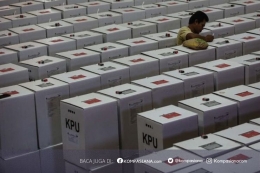The Downfall of Indonesia's Textile Industry
Indonesia's textile industry has long been considered a crucial component of the country's manufacturing sector,
contributing significantly to its economic growth and providing employment opportunities for millions of people.
However, in recent years, the industry has faced a series of challenges that have led to its downfall (Akhmadi et
al., 2020).
One of the primary factors contributing to the industry's decline is the high operational costs associated with
running textile factories in Indonesia. (Akhmadi et al., 2020) These costs have made it increasingly difficult for
domestic manufacturers to compete with their counterparts in other countries, such as China, Vietnam, and
Bangladesh, where labor and production costs are significantly lower. (Akhmadi et al., 2020)
Moreover, the sluggish export markets have also played a role in the industry's struggles. (Akhmadi et al., 2020)
As the global demand for textile products has waned, Indonesian manufacturers have found it increasingly
challenging to sell their products abroad, further exacerbating the financial difficulties they face.
The textile industry's woes have been compounded by the rapid changes in consumer preferences and the fashion
industry's evolving trends. (Dewi et al., 2015) The short product life cycles and the need to constantly adapt to
changing customer demands have put a significant strain on the resources of many textile companies, making it
difficult for them to sustain their operations. (Dewi et al., 2015)
Furthermore, the industry has been plagued by technological obsolescence, fragmented structures, low
productivity, and the production of low-end quality products. (Bhushi & Pharsiyawar, 2005) These issues have
made it challenging for the industry to keep up with the global market's demands, leading to a decline in its
competitiveness.
In conclusion, the Indonesian textile industry's downfall can be attributed to a combination of factors, including
high operational costs, sluggish export markets, changing consumer preferences, and technological and structural
challenges. Addressing these issues will be crucial for the industry's revival and its continued contribution to the
country's economic development.
To revive the textile industry in Indonesia, policymakers and industry leaders should consider the following
strategies:
1. Investing in modernizing production facilities and adopting new technologies to improve efficiency and
product quality (Bhushi & Pharsiyawar, 2005).
2. Promoting export diversification and exploring new markets to reduce reliance on traditional export
destinations (Akhmadi et al., 2020).
3. Providing financial support and incentives to textile companies to help them overcome the high operational
costs and maintain their competitiveness (Akhmadi et al., 2020).
4. Fostering collaboration between the textile industry and educational institutions to develop a skilled workforce
capable of meeting the industry's evolving needs (Dewi et al., 2015).
By implementing these strategies, the Indonesian textile industry can potentially overcome the challenges it faces
and regain its position as a key driver of the country's economic growth.
Another factor that has contributed to the industry's downfall is the increased debt levels of textile companies.
(Akhmadi et al., 2020) As companies have relied more on debt financing than their own capital to fund operational
activities, the burden of debt servicing has become a significant obstacle to their profitability and growth.
(Akhmadi et al., 2020)
The high debt levels have made it more challenging for textile companies to invest in modernizing their production
facilities and adopting new technologies, further exacerbating the industry's struggles. (Akhmadi et al., 2020)
To address the issue of high debt levels, textile companies should focus on improving their profitability and
liquidity. This could involve measures such as streamlining operational processes, reducing costs, and diversifying
their revenue streams. (Akhmadi et al., 2020)
Moreover, the government should consider providing financial assistance and incentives to help textile companies
restructure their debt and improve their financial stability. (Akhmadi et al., 2020) By addressing the debt-related
challenges, the industry can potentially regain its footing and become more resilient in the face of the various market pressures it faces.







